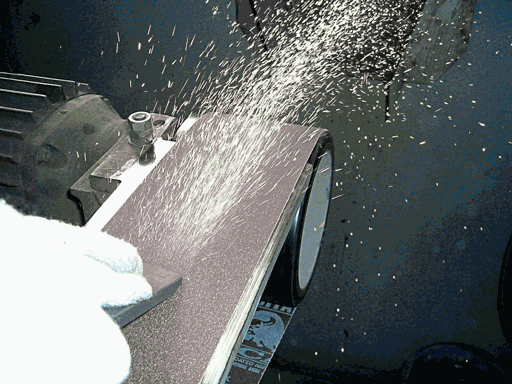Why Safety Matters with Sanding Belts
Sanding belts are indispensable tools in metal fabrication, woodworking, and industrial finishing applications. However, improper use can lead to serious workplace injuries, including lacerations, eye damage, and respiratory issues. This comprehensive guide provides professional safety recommendations for using sanding belts effectively while minimizing risks in your workshop or production facility.

Key Safety Equipment for Sanding Belt Operations
Before operating any sanding equipment, ensure you have these essential safety items:
- Eye Protection: ANSI-approved safety goggles (not just glasses) to prevent particle impact
- Respiratory Gear: NIOSH-approved N95 masks or better for dust protection
- Hearing Protection: Earplugs or earmuffs (minimum 22 dB noise reduction rating)
- Protective Clothing: Close-fitting, non-loose workwear and leather gloves
- Proper Footwear: Steel-toe boots with slip-resistant soles
Sanding Belt Specifications & Selection Guide
Choosing the right sanding belt is crucial for both safety and performance:
| Belt Size | Common Applications | Advantages | Safety Considerations |
|---|---|---|---|
| 4″ x 36″ | Small metal parts, detailed work | Excellent control | Higher risk of finger contact – use push sticks |
| 6″ x 48″ | General metal fabrication | Balanced performance | Requires proper machine guarding |
| 8″ x 72″ | Large surface finishing | Efficient material removal | Increased kickback potential – secure workpiece firmly |
Grit Selection Safety Tip: Coarser grits (36-80) remove material faster but generate more heat and sparks. Finer grits (120-220) are safer for finishing but require more frequent belt changes.
5 Critical Safety Practices for Sanding Belt Use
- Machine Inspection Checklist:
- Verify belt tracking and tension before each use
- Check for damaged or worn belts (replace if stitching is visible)
- Ensure all guards are in place and functional
- Proper Operation Techniques:
- Always move the workpiece against belt rotation
- Maintain consistent pressure – let the belt do the work
- Never force materials or make abrupt direction changes
- Workspace Safety Measures:
- Maintain 3-foot clearance around the machine
- Use proper lighting to see work clearly
- Implement dust collection systems to reduce airborne particles
- Material-Specific Precautions:
- Aluminum: Use specialized belts to prevent loading
- Stainless Steel: Requires proper ventilation for chromium dust
- Wood: Beware of resin buildup causing friction heat
- Emergency Preparedness:
- Keep a first aid kit and fire extinguisher nearby
- Know emergency shut-off locations
- Establish clear communication protocols in noisy environments
Professional Purchasing Recommendations
When selecting sanding belts for industrial use:
- Premium Materials: Choose zirconia alumina or ceramic belts for metalworking
- Reinforced Backing: Look for X-weight cloth backing for heavy-duty applications
- Proper Storage: Purchase belts with moisture-resistant packaging for longevity
- Reputable Brands: Consider proven manufacturers like 3M,VSM,HERMES, Norton, or Deerfos
- Bulk Purchasing: Buy multiple belts of the same grit to maintain consistent finish quality
Conclusion: Building a Culture of Safety
Implementing these sanding belt safety practices will significantly reduce workplace accidents while improving finishing quality and productivity. Remember that proper training is just as important as quality equipment – ensure all operators receive comprehensive instruction before using sanding machinery. By prioritizing safety in every aspect of your sanding operations, you’ll protect your most valuable assets: your workers and your business.
For industrial-grade sanding belts that meet the highest safety standards, explore our selection of premium abrasives designed specifically for professional metalworking applications.
(This article is based on AI generation and is for reference only. For specific usage effects, please communicate with us to purchase samples and then compare with the actual test results.)